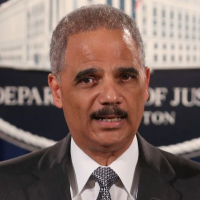Feds Reel In Asset Forfeitures that Southern California Cops Feast On
 Eric Holder (photo: Mark Wilson, Getty Images)
Eric Holder (photo: Mark Wilson, Getty Images)
It only took U.S. Attorney General Eric Holder three months to absorb the lesson meted out by John Oliver, the host of HBO’s “LastWeek Tonight” political comedy show, before announcing that the federal government was reining in the much-maligned civil asset forfeiture program.
Holder announced that from now on, local and state authorities will not be “using federal law to seize cash, cars and other property without evidence that a crime occurred.” They do a lot of that, in cooperation with federal authorities, through a program called “Equitable Sharing.” A Washington Post story last year calculated that local agencies picked up 81% of the $2.5 billion snared by civil forfeiture nationwide over seven years ending in fiscal year 2014.
Under forfeiture laws, police and prosecutors can seize property and cash from suspects before a conviction has been obtained. The law was originally developed as a powerful federal tool against organized crime, especially drug traffickers. But then it morphed as the feds lent their authority to purely local busts of criminals involved in somewhat lesser crimes.
The Post found that there were 61,998 cash seizures on highways and elsewhere. The New Yorker profiled a series of encounters that bore a remarkable resemblance to a shakedown.
California law forbids local and state officials from seizing assets without a conviction, but it was easily avoided under the federal “equitable sharing” policy, which allowed forfeitures to be done in Uncle Sam’s name with a wink and a nod. Holder’s action puts an end to much of that.
Asset forfeiture revenue has become a staple of some agencies, all the better because expenditures from cash raised by selling off merchandise is less transparent to the public. It has helped fuel the militarization of local police, blurring what used to be a clear distinction between soldiers fighting an enemy on a foreign battlefield and peace officers serving their communities. The money can’t just be spent on any old thing. Usually it’s stuff like weapons, informants and electronic surveillance, overtime and training.
KPCC compiled information on local California agencies from data gathered and shared by the Post. California’s take was put at $418 million. The Top 11 recipients in the state are all in the southern quarter:
$42.7 million Los Angeles County Sheriff’s Department
$29.7 million Los Angeles Police Department (LAPD)
$23.5 million “Regional Narcotics Suppression Program”
$17.7 million Anaheim Police Department
$12.5 million San Bernardino County Sheriff’s Department
$9.6 million Pomona Police Department
$9.2 million San Diego Police Department
$8.8 million Orange County Sheriff-Coroner Department
$7.6 million San Diego County Sheriff’s Department
$7.3 million L.A. Impact
$6.7 million Downey Police Department
–Ken Broder
To Learn More:
Holder Limits Civil Asset Seizure; Socal Law Enforcement Benefitted Most In State (by Aaron Mendelson, KPCC)
Asset Forfeiture and the Cycle of Electronic Surveillance Funding (by Dave Maass, Electronic Frontier Foundation)
Asset Seizures Fuel Police Spending (by Robert O'Harrow Jr. and Steven Rich, Washington Post)
How Police Spent Billions Seized from Americans (by Steven Rich and Robert O'Harrow Jr., Washington Post)
Taken (by Sarah Stillman, The New Yorker)
Local Governments Increase Revenue by Seizing Property Belonging to Those Not Charged with Crimes (by Noel Brinkerhoff and Steve Straehley, AllGov)
Mendocino County’s Innovative “Shakedown” of Pot Defendants Is a Big Money Maker (by Ken Broder, AllGov California)
- Top Stories
- Controversies
- Where is the Money Going?
- California and the Nation
- Appointments and Resignations
- Unusual News
- Latest News
- California Forbids U.S. Immigration Agents from Pretending to be Police
- California Lawmakers Urged to Strip “Self-Dealing” Tax Board of Its Duties
- Big Oil’s Grip on California
- Santa Cruz Police See Homeland Security Betrayal in Use of Gang Roundup as Cover for Immigration Raid
- Oil Companies Face Deadline to Stop Polluting California Groundwater





